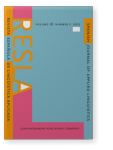Vol. 28:2 (2015) ► pp.555–587
Vol. 28:2 (2015) ► pp.555–587
The role of aural recognition in L2 Spanish mood selection
It is widely recognized that the development of mood selection in Spanish poses a unique challenge for English-speaking L2 learners, but the role that aural mood recognition plays in this process has yet to be fully explored (Collentine, 2010). This present study, conducted with intermediate-advanced L2 Spanish students, considers issues of aural saliency for regular and irregular present subjunctive forms, and argues that if students cannot perceive mood modeled in spoken input, the necessary frequency-driven, form-meaning connections essential for acquisition could be hindered, impacting mood production (Ellis, 2002, 2009). These exploratory results suggest a positive correlation between phonological sensitivity to the present subjunctive form and target-like mood production, especially when coupled with mood noticing strategies. The outcome of this study offers insight into L2 mood selection development and adds support to pedagogical approaches that strengthen aural mood recognition and encourage explicit strategies for mood processing.
